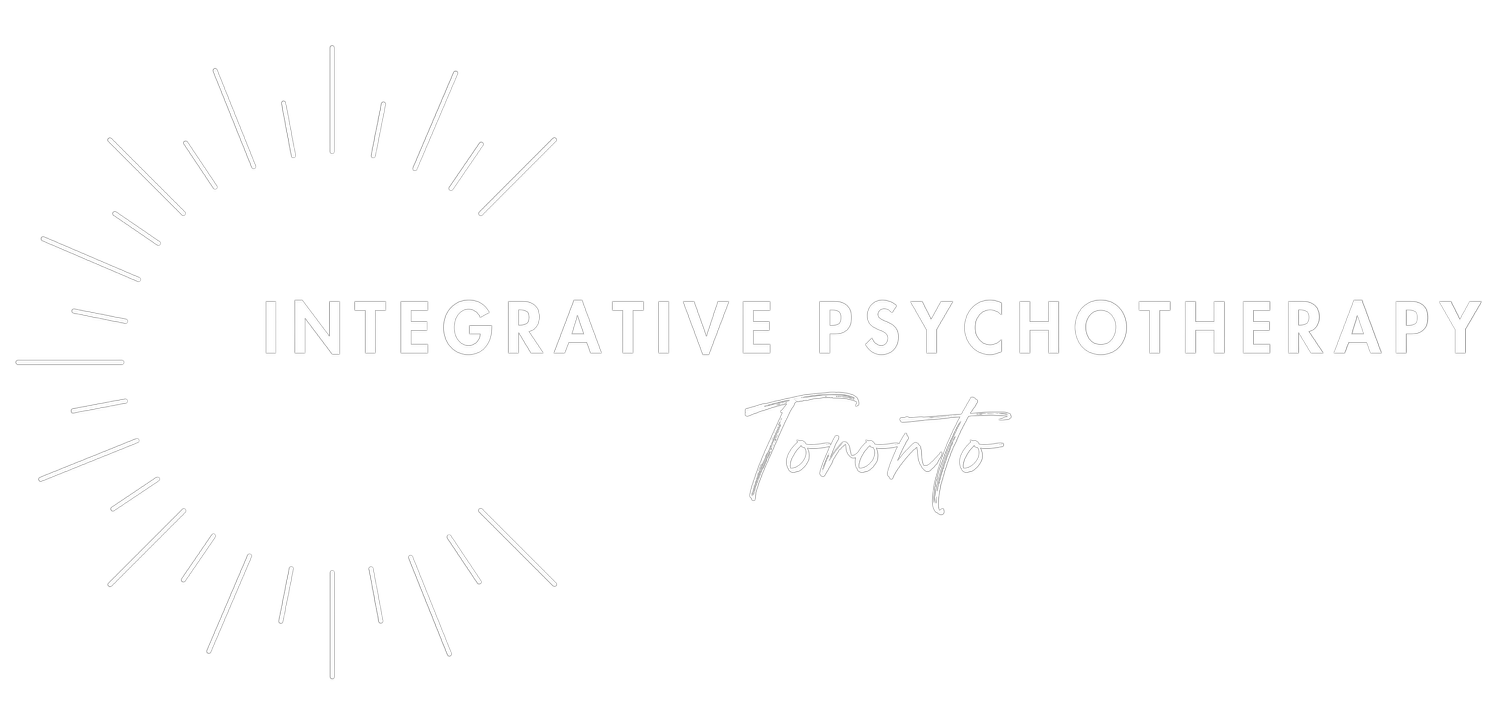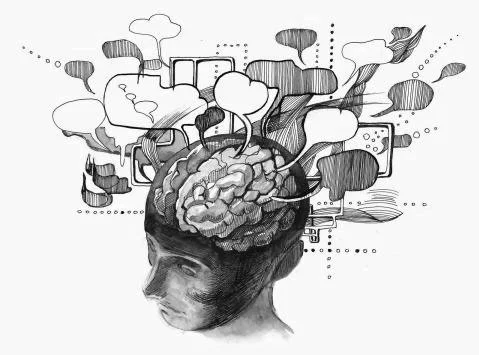“Because you can’t think your way out of a feeling.”
Eye Movement Desensitization and Reprocessing (EMDR) therapy is a breakthrough approach for processing traumatic memories, reducing distress, and promoting emotional healing. If you’ve experienced trauma or are struggling with anxiety, depression, or PTSD, EMDR may offer a powerful path to relief. At Integrative Psychotherapy Toronto, we provide EMDR therapy in a safe, supportive environment tailored to your unique needs.
What is EMDR Therapy?
When we are faced with overwhelming emotional distress or trauma, our brain's ability to make sense of our experience is greatly diminished.
Our brain could be thought of as a computer who’s job it is to take the inputs - all the information our senses are picking up from the world - and organize them into one cohesive output - our experience of the world.
Trauma could be thought of as anything that overwhelms our brain’s computing powers.
With our bandwidth exceeded, information processing stops, leaving the inputs disorganized and the output fragmented and incomplete. And it is that disorganized, fragmented and incomplete memory state that prevents us from moving on. The brain can’t make sense of things, and so it continues to loop.
Eye Movement Desensitization and Reprocessing (EMDR) is a technique that facilitates information processing in the brain. By activating parts of the brain that are involved in memory processing and consolidation, EMDR helps the brain to sort through the disorganization and make sense of the experience. When used during therapeutic reprocessing of a distressing experience, EMDR helps to integrate previously unprocessed information and resolve left-over emotional remnants.
How EMDR works
EMDR therapy is a specialized psychotherapy method designed to help people process and heal from traumatic memories. It’s particularly effective for conditions like post-traumatic stress disorder (PTSD), anxiety, depression, and more.
Instead of traditional talk therapy, EMDR uses a technique where the therapist uses bilateral stimulation, such as eye movements or tapping, while recalling distressing experiences. These movements activate the brain’s natural information processing system, allowing your system to reprocess negative memories, reducing their emotional impact and shifting how they are stored in your brain.
Benefits of EMDR Therapy
EMDR (Eye Movement Desensitization and Reprocessing) therapy is a powerful tool for healing and resolving past traumas and can help individuals move forward in their lives with more peace and resilience. EMDR is a form of psychotherapy that utilizes eye movements, tapping, or other forms of bilateral stimulation to help individuals cope with and overcome past traumatic experiences. This method has been shown to be highly effective for trauma survivors, providing a secure and nurturing environment for the body to heal and recover.
Here are some of the benefits of somatic EMDR therapy:
Rapid Results: Somatic EMDR therapy is a short-term treatment that aims to produce rapid results. Often, patients experience relief within only a few sessions.
Increased Self-Awareness: Somatic EMDR therapy can enhance a patient's self-awareness and promote a deeper understanding of their emotions and reactions to specific circumstances. This newfound awareness can enable individuals to manage their thoughts and feelings more effectively.
Reduced Anxiety and Depression: Individuals who receive somatic EMDR therapy may notice a substantial decrease in their anxiety and depression symptoms. This can result in a better mood, enhanced energy levels, and improved mental well-being overall.
Reduced Flashbacks and Nightmares: If you're struggling with intrusive memories, flashbacks, or nightmares due to traumatic experiences, somatic EMDR therapy may be particularly effective for you. This type of therapy can assist in processing and overcoming these symptoms, ultimately leading to an improved quality of life.
Improved Relationships: Experiencing trauma can have a negative effect on an individual's relationships with others. With the help of somatic EMDR therapy, patients can gain a better understanding of their behaviours and responses in relationships and ultimately develop healthier and more fulfilling connections with others..
Our Psychotherapists
BECAUSE TOGETHER WE REACH FURTHER
What to Expect During EMDR
Each EMDR session follows a structured approach to ensure a safe and effective healing process. Here’s what you can typically expect:
Step 1: Understanding Your Story
In your first session, your therapist will work closely with you to gather your history and understand the traumatic or challenging experiences you want to address. This helps in forming a tailored plan for your therapy.
Step 2: Preparing for EMDR
For some, preparing for EMDR can be as simple as explaining how EMDR works and answering any questions you have, so that you feel ready to proceed.
For others, preparing for EMDR may take a few sessions, as we work through certain exercises and resources to ensure you and your system are able to access the difficult experiences in a way that feels safe and healing.
Step 3: Reprocessing Trauma
During reprocessing, you’ll focus on the distressing experience while the therapist guides you through sets of bilateral stimulation. This process allows your brain to reframe and process the memory, reducing its emotional intensity over time. This phase includes a few steps:
Targeting distressing experiences: We help identify specific memories, triggers or emotions that continue to cause emotional pain or discomfort.
Bilateral stimulation: To faciliate reprocessing, you’ll follow the therapist’s finger movements with your eyes while focusing on the traumatic memory. Other forms of stimulation, like tapping or auditory tones, can also be used.
Reprocessing: As the sessions progress, the memory will become less distressing, and new, positive associations will replace the previous emotional charge.
Step 4: Integration
Once the reprocessing is complete, you’ll work with your therapist to integrate your new, healthier responses into daily life. Many clients describe feeling lighter, less burdened, and more in control after just a few sessions.
Is EMDR Right for You?
If you’re tired of reliving painful memories or feeling emotionally paralyzed by your past, EMDR might be the solution you’ve been looking for. At Integrative Psychotherapy Toronto, we have seen the transformative power of EMDR therapy firsthand. Whether you are dealing with trauma, anxiety, or depression, we can guide you through a compassionate and personalized treatment plan that fits your needs.
How long does EMDR therapy take?
The number of sessions varies based on the complexity of the trauma. For some, relief may come in just a few sessions, while others might require longer-term therapy, depending on their history and symptoms.
Does EMDR really work?
Yes! EMDR has been widely researched and is recognized by organizations like the American Psychological Association and the World Health Organization as an effective treatment for trauma and PTSD.
Can I try EMDR if I’ve never had therapy before?
Absolutely. EMDR is designed to work both for individuals new to therapy and those who have tried other therapeutic approaches without success. We tailor the process to your experience and comfort level.
What should I look for in an EMDR therapist in Toronto?
Look for a therapist trained and certified in EMDR who offers a safe, compassionate, and professional environment. At Integrative Psychotherapy Toronto, we are fully certified in EMDR therapy and have years of experience helping clients overcome trauma.
How is EMDR different from other therapies?
Unlike traditional talk therapy, EMDR focuses less on discussing memories and more on reprocessing them through a structured method of eye movements. This can lead to faster relief from distressing symptoms.
Why should I choose Integrative Psychotherapy Toronto for EMDR therapy?
At Integrative Psychotherapy Toronto, we believe in a holistic, client-centered approach to mental health. Our therapists are trained in multiple evidence-based therapies, including EMDR, and are committed to helping you achieve deep, lasting healing.
Frequently Asked Questions About EMDR
Ready to let your past be in the past?
If you’re ready to start your healing journey with EMDR, we’re here to help. Contact us today to book a consultation with one of our licensed therapists. Let’s work together to free you from the emotional weight of the past and build a future of resilience and peace.













